Did You Know?
Deosai National Park stands at an average elevation of over 4,114 meters, making it one of the highest plateaus in the world
35°05'14.5"N 75°31'00.6"E
![]()
On the UNESCO World Heritage Site Tentative List
Deosai National Park stands at an average elevation of over 4,114 meters, making it one of the highest plateaus in the world
The Best Time to Visit Gilgit Baltistan Region is Summers. Preferably from April to September. Winters are Extremely Cold and Snowfall blocks most of access. Hence Winters are not recommended.

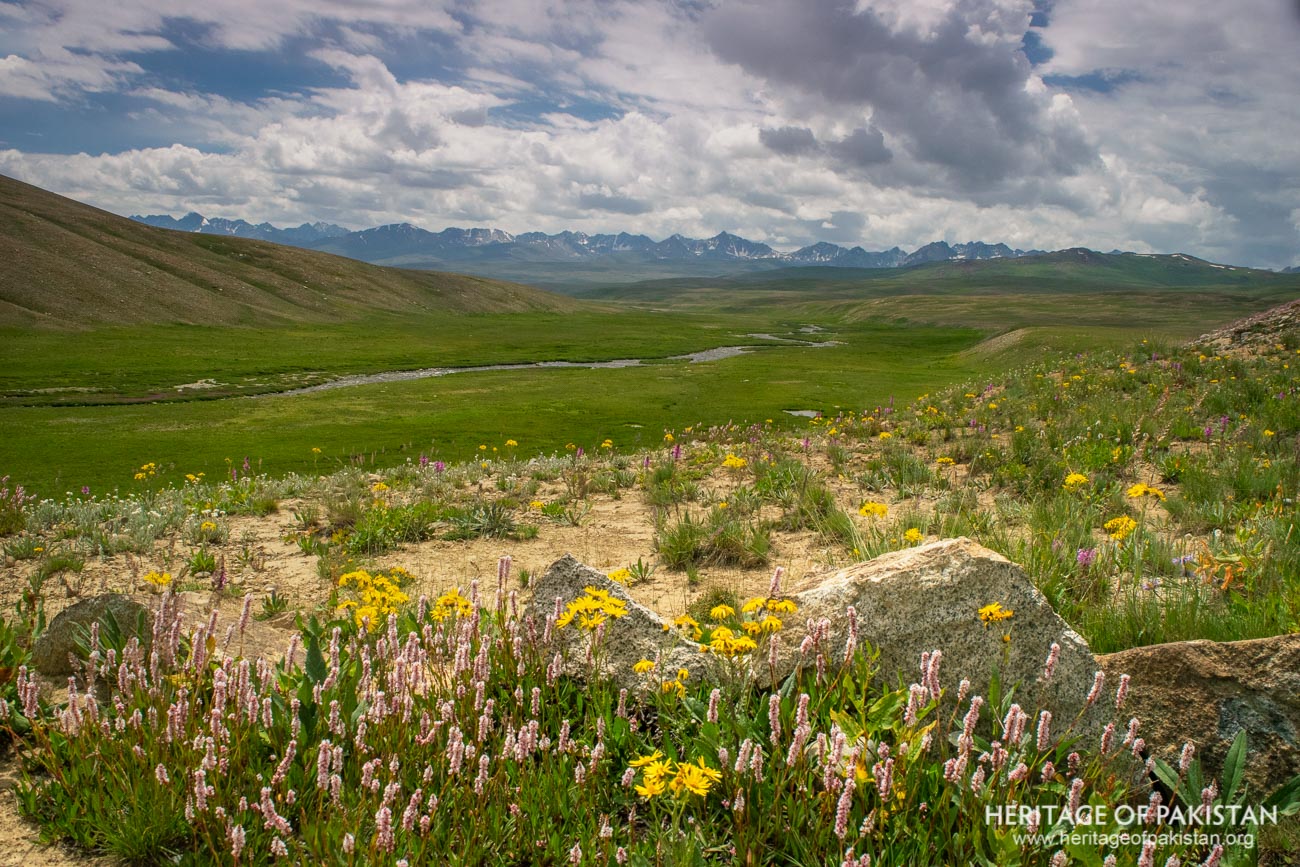
At an average elevation of 4114 m, Deosai National Park is the second highest plateau in the world, and the only place on earth with a stable population of the endangered Himalayan Brown Bear. Situated approximately 63 km from Skardu, Deosai lies in the Gilgit-Baltistan region and extends over an impressive area of approximately 3626 km². Positioned at an altitude ranging from 3500 to 5200 meters, this alpine highland forms an integral part of the Western Himalayan range of Pakistan, covering parts of Astor, Kharmang, and Skardu districts. Deosai, locally referred to as "The Land of Giants," presents an enchanting vista of boundless, treeless plains that sprawl into the distance. Its vast, unpopulated expanse, devoid of tree cover, adds to its unique beauty, probably influencing the local folklore to associate the surreal landscape with 'Deos' (Giants).
Deosai National Park has been distinguished by its rich biodiversity, being a sanctuary to several endangered species such as the Ladakh Urial, Cape Hare, Snow Leopard, and the Tibetan Wolf. In an effort to conserve the unique ecosystem of the region and particularly to protect the declining population of the Himalayan brown bears, the government of Gilgit-Baltistan declared Deosai as a National Park in 1993 under the Northern Areas Wildlife Act of 1975. Since 2017, the park has been recognized as part of the UNESCO Tentative World Heritage List, due to its outstanding universal value and its importance in the conservation of the critically endangered Himalayan Brown Bear.
The term 'Deosai' has its roots in the Urdu language, a fusion of the words "Deo," signifying a Giant, and "Sai," representing a Shadow, collectively translating to "Shadow of the Giants." This phrase owes its origin to the famous folk tale "Saif-al-Mulook," penned by Mian Muhammad Baksh. In the regional Balti dialect, Deosai is also referred to as 'Ghbiarsa.' This term, meaning "summer’s place," signifies that this region is primarily accessible during the summer season.

Colonel Algernon Durand of the British Army crossed Deosai in 1899 and describes his experience in his book “Making Of A Frontier: Five Years' Experiences And Adventures In Gilgit, Hunza, Nagar, Chitral & The Eastern Hindu-Kush”. He writes: "The Deosai plain is a great basin about forty miles across, averaging twelve thousand feet in height. and surrounded by a circle of snows rising three to four thousand feet higher. It is cut up by rolling spurs projecting from the main ranges into numerous broad shallow valleys, through which run rapid streams. We were too early in crossing it, and the grass had not properly grown, though there were patches here and there and some flowers. It was a most desolate scene. The bare plains stretch away for miles without the vestige of a tree and with only here and there a few patches of stunted dwarfed juniper. Later on, when grass springs up, they become favorite grazing grounds .The only animal life is furnished by the Marmots. The only animal life is furnished by the marmots, which live there in great numbers, and whose curious whistle sounds weirdly in keeping with their surroundings."
Durand also describes him visiting a notable Buddhist Site located at the mouth of a ravine leading to Deosai. This relic was a large rock, fallen from the cliffs above, bearing carvings of Buddha figures and inscriptions. Despite its nearly perfect preservation, extreme conditions like heavy winds, dust, and bright sun, made it difficult for Durand to capture quality photographs or decipher the inscription. Later, the stone probably fell into the ravine and have been lost.
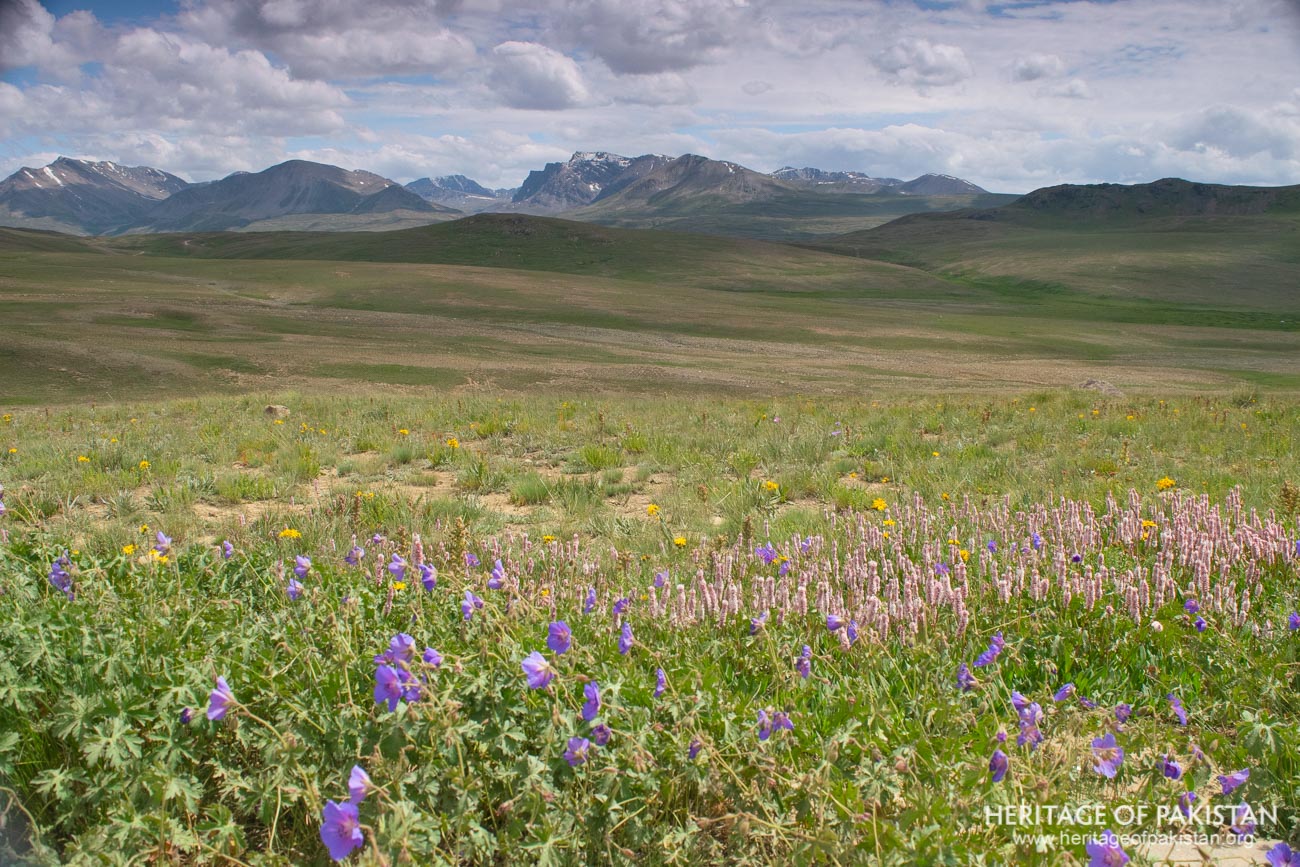
The Deosai National Park is located in the western massif of the Himalayas, on the east of the Nanga Parbat Peak and in close proximity to the Central Karakoram Range. Deosai is surrounded by the valleys of Skardu, Kharmang, Astore, and Gultari.. Glacial activity was initially responsible for creating the Deosai plateau. As the water flowed from the mountains, it filled the hollows with deposits. Later, with climate changes, erosion began. This process carved out valleys that continued the hollows of the mountains, leaving intermediate sections of stony table land. The Park is located at the convergence of two biogeographical provinces, the Himalayan and Karakorum-Pamir highlands. The park's geographical positioning facing the monsoon-affected outer Himalayas means the Deosai plain receives a higher amount of rainfall than the adjoining northern and north-eastern valleys of Baltistan, with annual precipitation varying from 350 to 550 mm, largely in the form of snow.
The park encompasses a vast range of altitudes from 3,500 to 5,200 meters above sea level. The central part of the Park is relatively flat and gentle, with lower elevations of 4,000 meters. Approximately 63% of the area boasts an elevation range from 4,000 to 4,500 meters, while 22% of the area exceeds 4500 meters. This makes the Deosai Plains the highest plateau in the world, after the Changtang Tibetan Plateau.
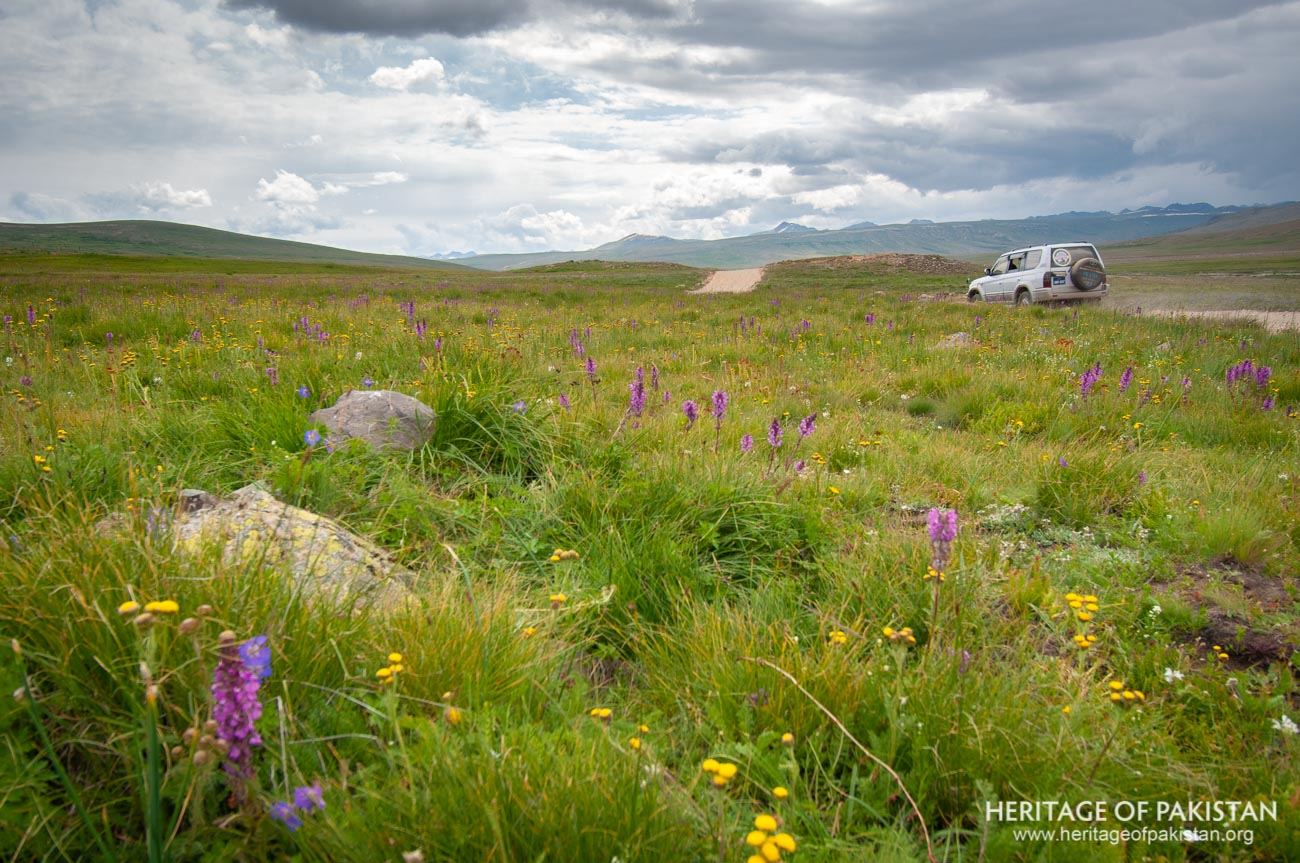
Designated as a national park, Deosai now has some restricted zones. The Parks and Wildlife Department of the Gilgit Baltistan government has divided the area into various zones, with certain areas accessible only to visitors. Notably, the core zone is a specially protected area for Brown bears and other wildlife.
The park is a significant water source, with three important river systems—Shatung, Bara Pani, and Kala Pani—originating from here. These form the Shigar River, a vital tributary of the Indus River. Deosai and Sheosar Lake also constitute one of the highest elevation freshwater wetlands globally. The melting snow gives rise to alpine streams such as Chogho Chu (Bara Pani), Naqpo Chu (Kala Pani), and Shatong Chu (Shatong Nala), which ultimately transform into the rivers Sadpara, Shila, Katisho, Shingo, Gultari, and Chillam.
The optimal time to visit Deosai is from mid-June to August, when the park is replete with wildflowers and the temperature is bearable. However, from October to May, it is blanketed with snow. Mean daily temperatures fluctuate from –20 C to 12 C. The annual precipitation ranges from 510 mm to 750 mm, falling predominantly as snow. By the end of November, the onset of snow in late September renders the Deosai Plains inaccessible.
Deosai National Park, positioned at an average elevation of 4114 m above sea level, houses a vast and rich array of species of flora and fauna. More than 24 species of mammals, over 200 types of birds, and an abundance of fish species like Tibetan Snow Trout, Indus Snow Trout, and Slate-colored snow trout find their habitat within its precincts. Over 340 species of plants, including Polygonum affine, Thalictrum alpinum, Bromus oxyodon, Saxifraga flagellaris, and Androsace mucronifolia bloom here, with the snow's retreat in the summer, transforming the park into a burst of vibrant colors.
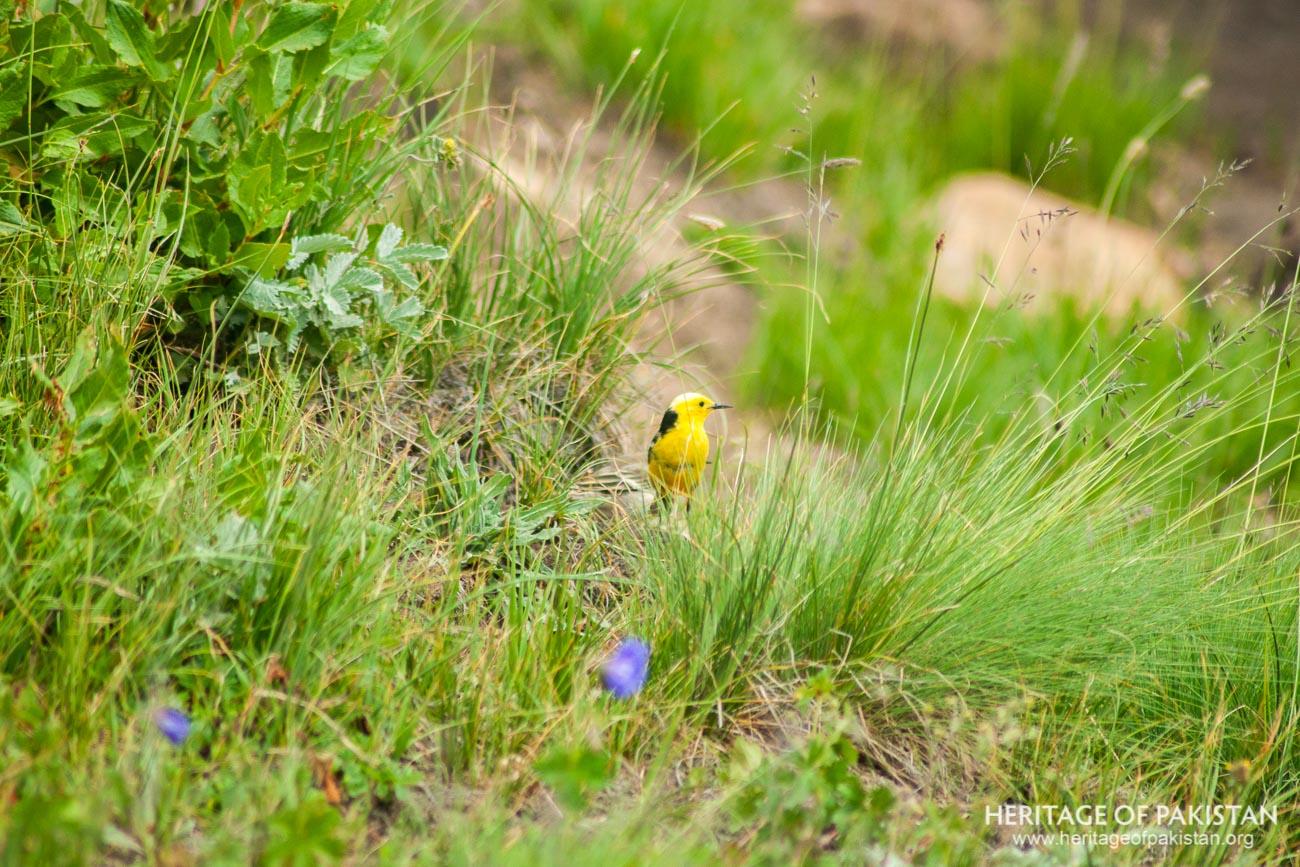
The park is particularly celebrated for its stable population of the critically endangered Himalayan brown bear, a key-stone species in the Deosai National Park. Large scale poaching in the early 1990s severely threatened these bears, leading to the establishment of the park in 1993 by the Government of Gilgit Baltistan to safeguard their survival. The Himalayan Wildlife Foundation and key contributors such as Dr Anis ur Rehman and Mr Vaqar Zakaria played critical roles in promoting awareness and designating Deosai as a national park when the bear population dwindled critically low at 19. After the park's establishment, the bear population increased to 88 in 2022. This is still far below the threshold for a viable population that previous researchers have established. A significant factor threatening these bears' existence is climate change, which has been projected to cause a further decline of 11% in their population by 2050.
Another mammal that has made Deosai its home is the Golden marmot. They create large colonies appearing as earth mounds with multiple inlets across the Deosai Plains and hibernate from mid-September until March. However, Deosai National Park's landscape and geography do not make it a preferred habitat for Snow leopards. These creatures prefer the high elevation areas surrounding the Deosai plateau, including the slopes of Nanga Parbat, Skardu, and Astore Valley. However during recent survey periods, 4 Snow leopards, 153 foxes, and 36 wolves were sighted.
Deosai's fauna diversity extends to other mammals like the Tibetan wolf (Canis lupus chanco), Himalayan ibex (Capra ibex sibrica), and Tibetan red fox (Vulpus vulpus montana). A 2019 survey reported that the park hosts 559 Himalayan ibexes mainly occupying its peripheral hills. Additionally, the region contains some medicinal plants like Thymus linearis (Reetumburuk), Saussurea lappa (kuth), and Ephedra gerardiana (Say) with locally renowned therapeutic properties.
Deosai's unique biodiversity and the urgency to conserve its endangered species, particularly the Himalayan brown bear, have led to its inclusion in the tentative list of UNESCO world heritage sites. However, with the escalating climate change threat, ongoing conservation efforts are imperative for the sustained survival of these species.
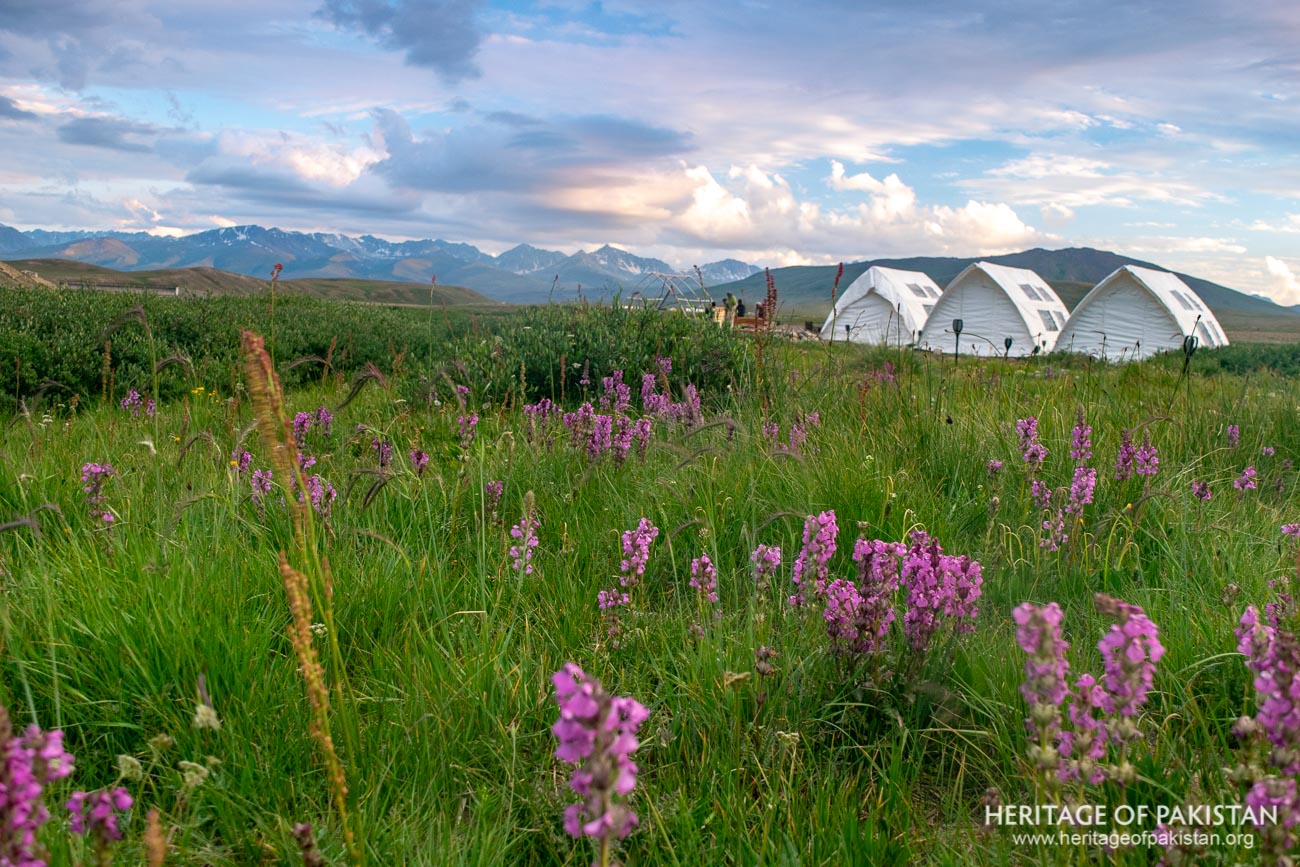 Flowers of Deosai National Park
Flowers of Deosai National Park
Ancient Greek writer Herodotus, the father of history, penned intriguing accounts of gold-digging ants in northern India. According to him, these creatures amassed gold dust, which was then collected by the locals.
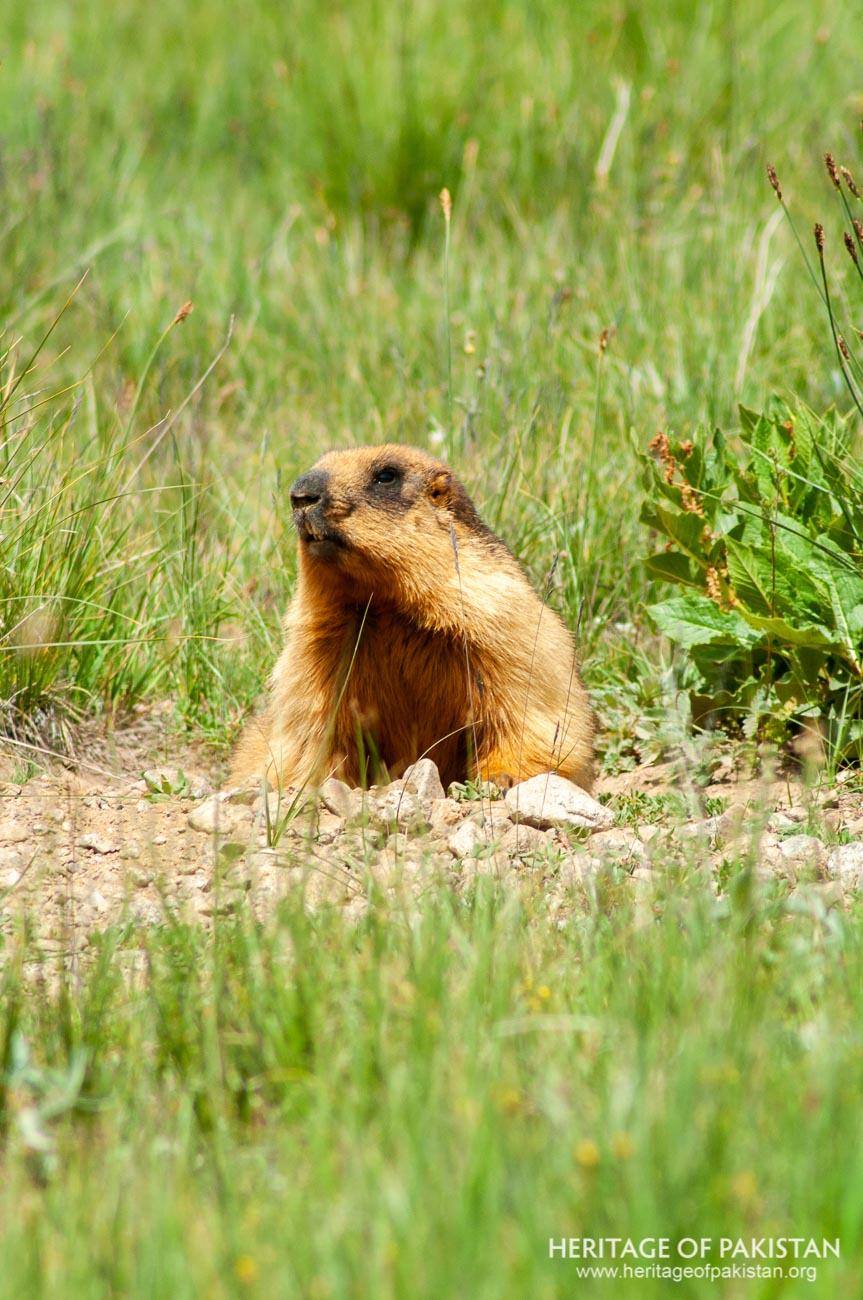
In his book, ‘The Ants' Gold: The Discovery of the Greek El Dorado in the Himalayas’, French ethnologist Michel Peissel posits that what Herodotus referred to as giant "ants" could, in fact, be the Himalayan marmots that inhabit the Deosai Plateau in the Gilgit–Baltistan province of Pakistan. As in Herodotus' descriptions, the soil of the Deosai Plateau is indeed rich in gold dust. Peissel confirmed from the Minaro tribal people, long-time inhabitants of the Deosai Plateau, that they have traditionally gathered the gold dust brought to the surface by marmots when they dig their burrows. Therefore, it is highly probable that Herodotus was referring to the golden marmots of Deosai.
In Herodotus' original words, he details, “Besides these, there are Indians of another tribe, who border on the city of Caspatyrus, and the country of Pactyica; these people dwell northward of all the rest of the Indians, and follow nearly the same mode of life as the Bactrians. They are more warlike than any of the other tribes, and from them the men are sent forth who go to procure the gold. For it is in this part of India that the sandy desert lies. Here, in this desert, there live amid the sand great ants, in size somewhat less than dogs, but bigger than foxes. The Persian king has a number of them, which have been caught by the hunters in the land whereof we are speaking. Those ants make their dwellings underground, and like the Greek ants, which they very much resemble in shape, throw up sand-heaps as they burrow. Now the sand which they throw up is full of gold. The Indians, when they go into the desert to collect this sand.”
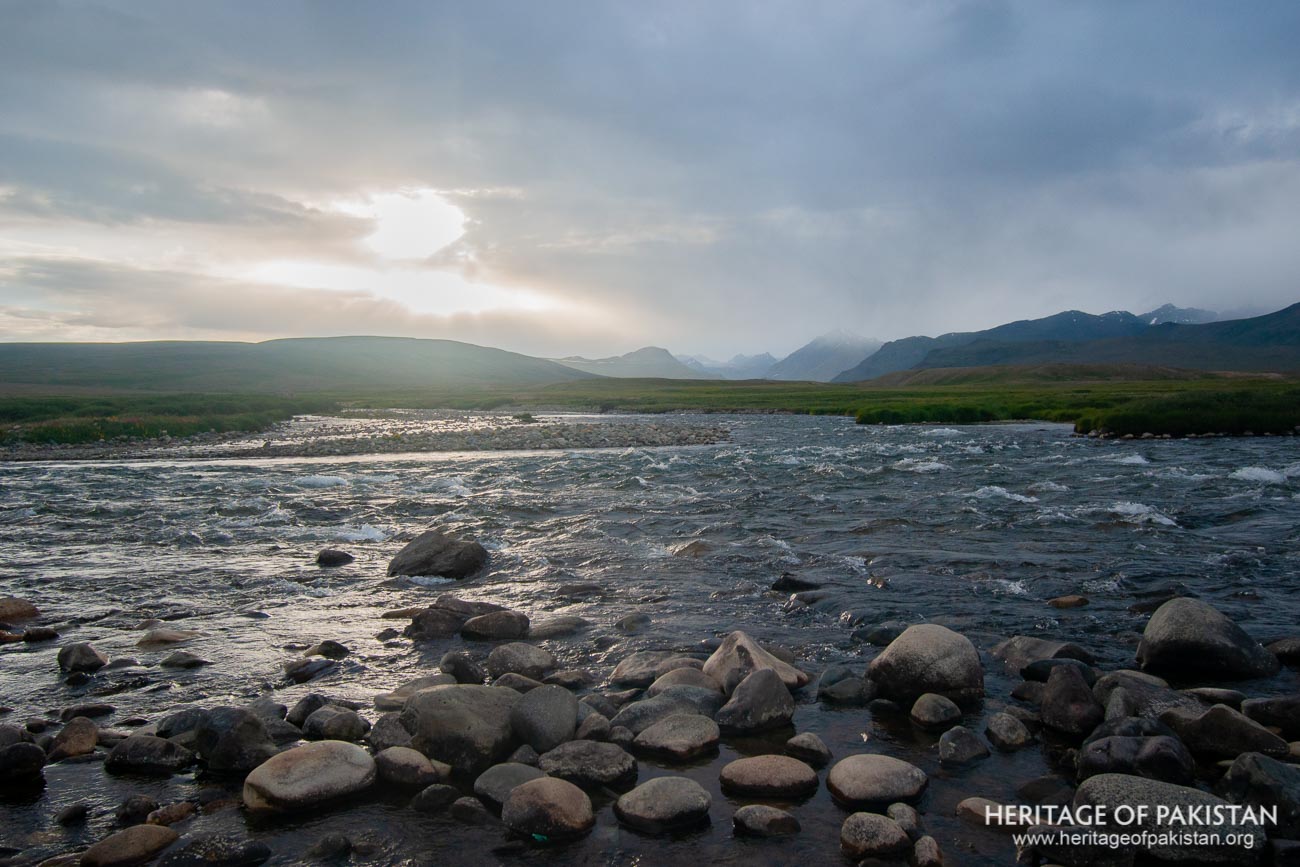
In Deosai, over five lakes offer a spectacle of nature's beauty, with Sheosar standing as the largest among them. The other lakes can be found in the Burgi La region. Deosai is also the source of three rivers, namely Kala Pani, Shatung, and Bara Pani.
The Kala Pani and Bara Pani rivers merge to form the Shango Shigar river. Bara Pani is a favored spot for tourists, often becoming an overnight camping site for those seeking to relish the views of the region. It is indeed a breathtaking location.
Sheosar Lake stands as the primary water body in Deosai, complemented by numerous smaller lakes and marshlands dispersed across the region. Its fresh water undergoes a cyclical transformation, freezing over in the winter months and adjusting its water table seasonally. As winter unfolds, the water level decreases, only to gradually rise again as summer approaches.
The Deosai Mountains' terrain is rugged and scarcely populated by humans, surrounded by eight valleys: Satpara, Shilla, Dappa, Shingo Shigar/ Karabosh, Das Khirum/ Chillum, Bubin, Shagarthang and Burgay. These valleys serve as entry points into the park.
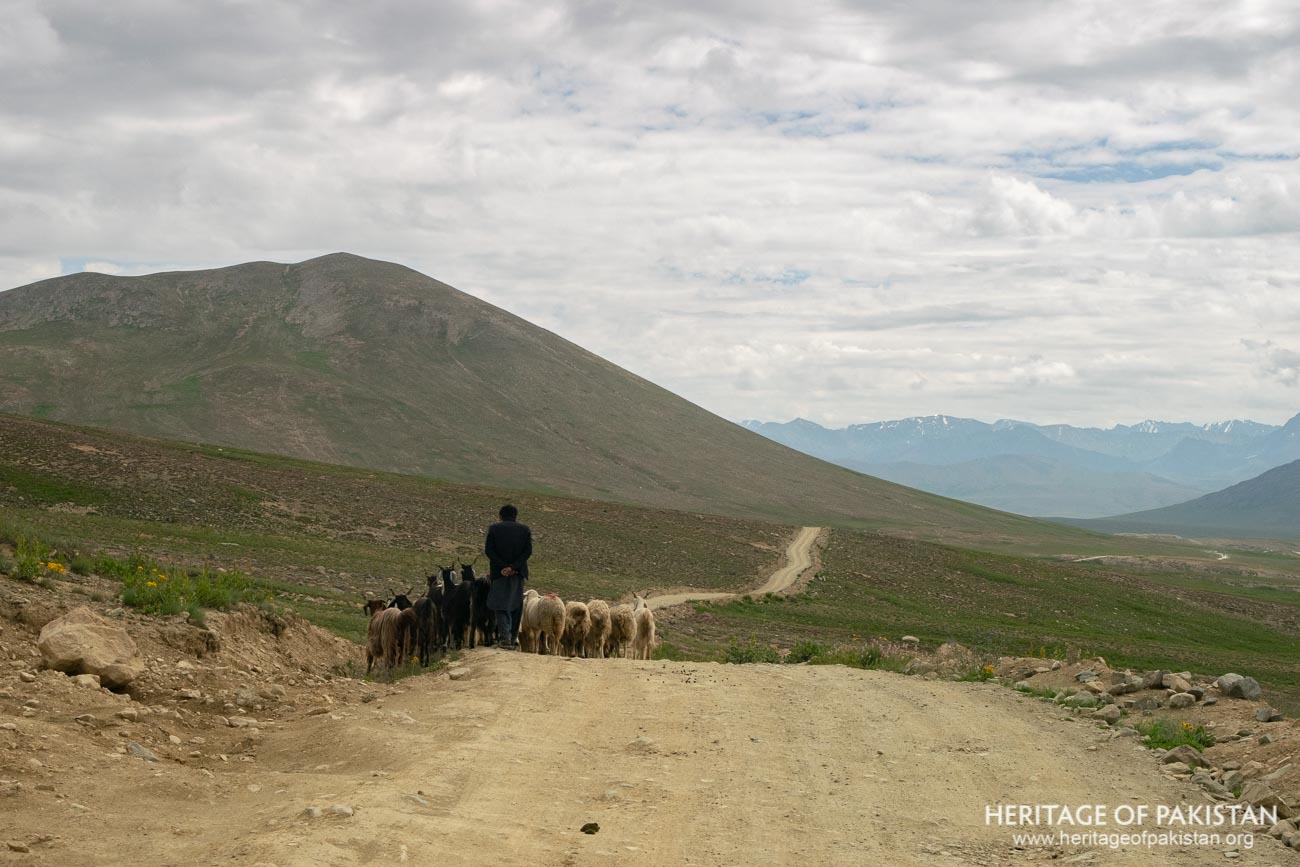
The two major languages spoken are Balti and Shina, though a minority of Gujjars also speaks Gujjari. The main sects of Islam that inhabit the surrounding valleys are Noorbukhshi, Shia, and Sunni.
Subsistence agriculture and livestock herding are the primary sources of livelihood and family income. However, a limited number of people, particularly those aged between 20-50, are also associated with the tourism industry. The central Deosai and its western flanks are grazed by the nomadic Gujjars, who travel to the area from the plains of Punjab and AJ&K. The Gujjars utilize the pasture of Chota Deosai, and rarely cross over to the eastern side of the main stream, due to the longstanding rights there of the people of the Gultari area.
The Deosai plains play a critical role in the livelihoods of communities living on the periphery of the park, who have historically relied on it for grazing, hunting, and poaching of wildlife. Nomadic groups called Bakarwals or Gujjars have maintained traditional access to these plains for livestock grazing for centuries. The zoning allowed communities access to pastures, which are vital for their survival, but not to the core bear habitat areas. This measure has helped control excessive grazing practices of the Gujjars and confined them to specific zones. The area most frequented by the bear population was classified, while separate zones were allocated for community grazing and Gujjars, the traditional migrant herders who come for grazing from Punjab province during the summer season.

Deosai National Park is segregated into four primary zones for efficient management and conservation efforts: the Core Zone, the Wilderness Zone, the Sustainable Use Zone, and the Visitors Intensive-Use Zone.
The Core Zone is strictly protected for biodiversity, especially aiming to ensure the conservation of the Brown Bear and Altitude Wetlands. This is the region most critical to preserving the natural character of the park and safeguarding its unique species.
Adjacent to the Core Zone is the Wilderness Zone. The objective here is to provide a protective buffer for the core area while allowing controlled grazing of livestock and limited human presence. This zone serves to maintain its natural character while supporting the survival of the Nomads' millenarian tradition. If the Nomads were to reduce their presence in the future, this zone could partially be converted into a Core zone, thereby extending the strictly protected area.
The Sustainable Use Zone is specifically allocated for sustainable utilization by local communities and the Gujjar-Bakarwals. The preservation of its natural character is paramount; however, human and livestock presence is permissible, specifically for local communities. Occasional visitors are kept to a minimum and are allowed to traverse only along designated trails or with a special permit.
Lastly, the Visitors Intensive-Use Zone is defined by areas that frequently encounter a significant human presence, including roads/tracks, campsites, and designated fishing zones. This zone allows visitors to the national park to appreciate its beauty and wilderness in a sustainable manner.
Additionally, the frequent sightings of Brown Bears, particularly during winter, in areas bordering the park led to the establishment of a Buffer Zone. This zone isn't merely a circular perimeter around the park. Instead, it is an area determined by linking Brown Bear sightings, topographical features, and vegetation cover.
Residents of Satpara quickly capitalized on the authorization to set up campgrounds, colloquially referred to as hotels, on the plateau. The inaugural campsite debuted at Shatung La in 1995, mainly catering to day-trippers with essential amenities. In 1998, an improved facility was established near the Bara Pani bridge, offering reasonably tidy overnight tent accommodations. Glamp Pakistan operates luxury camping pods at the Bara Pani site in Deosai, though it's important to note that temperatures can plummet significantly at night, so adequate preparation is highly recommended.

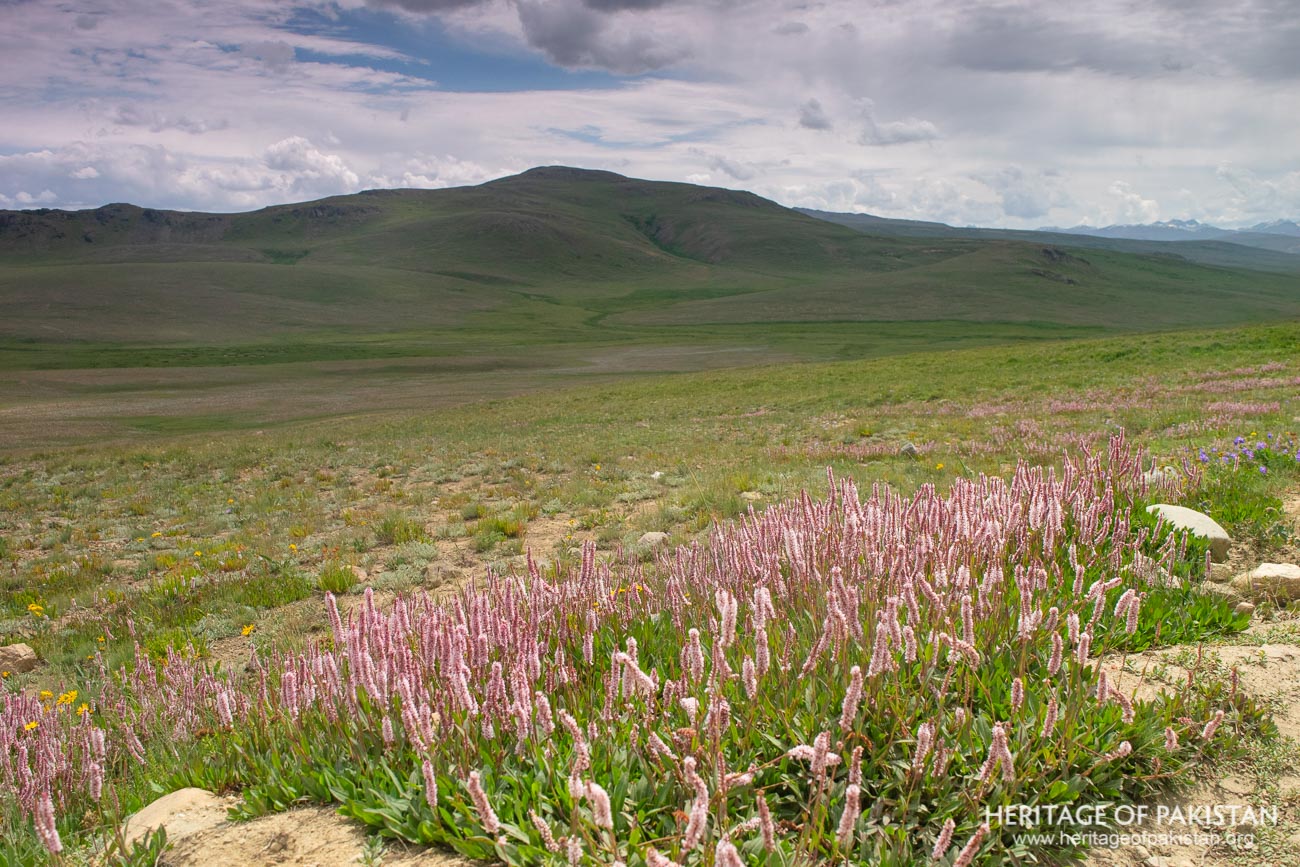
Discover the Deosai National Park image gallery and immerse yourself in photographs

All Photographs by Syed Noor Hussain and Sania Azhar.
All Rights Reserved. Photos may be used for Non-Commercial, Educational, Artistic, Research, Non-Profit & Academic purposes.
Commercial uses require licensing agreement.


Add a review